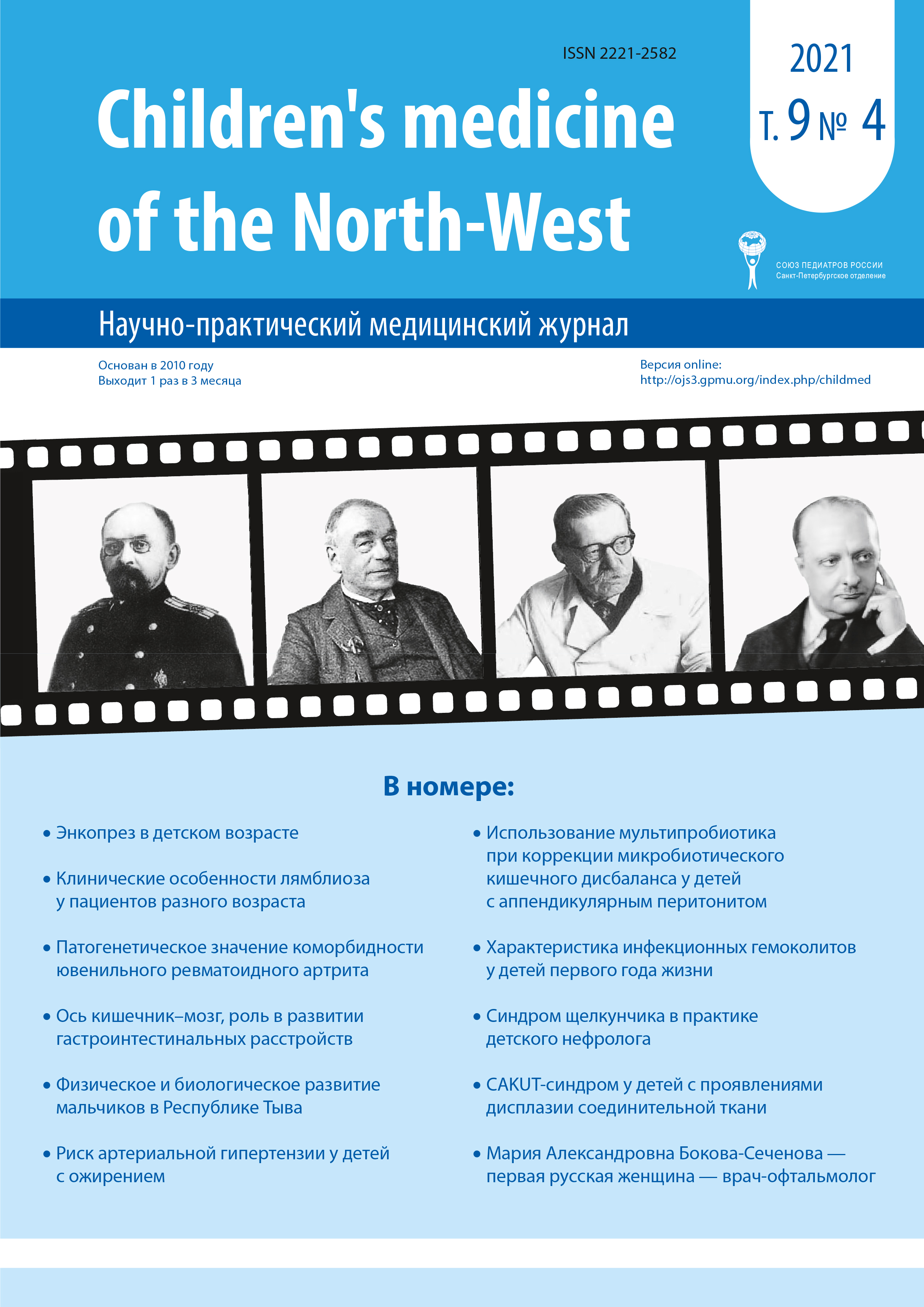CHARACTERISTICS OF PHYSICAL AND BIOLOGICAL DEVELOPMENT OF BOYS IN THE REPUBLIC OF TYVA
Abstract
Preserving the health of the younger generation of indigenous and small peoples of Siberia is a priority social task. Purposes and tasks: to identify the characteristics of growth and puberty of school boys of the titular nationality in the Republic of Tyva. Material and methods. A survey of boys and young men studying in educational institutions of Kyzyl was carried out. A total of 554 students aged from 11 to 18 years old were examined. The survey included somatometry (body length and weight, chest circumference), calculation of body surface area using the Dubua formula; assessment of sexual development by J. Tanner and M.V. Maximova. Results. The dynamics of indicators of the main somatometric indicators indicates that the pubertal growth spurt occurs at the age from 13 to 15 years. The initiation of sexual development by all signs is observed in the surveyed schoolchildren from the age of 12, with an average body surface area of 1.24 m2. The average age of pubic hair onset was 13.9±0.5 years; voice mutations - 14.9±0.4 years; growth of the thyroid cartilage 14.8±0.5 years, respectively. Facial hair growth appears on average at the age of 15.0±0.3 years and is ahead of the appearance of hair growth in the armpits (15.4±0.5 years). The correspondence of the level of sexual development to the passport age was noted in 65.5±2.6% of the surveyed schoolchildren. Among the disharmonious variants of biological development, delayed puberty prevailed: in 29.2±2.5% of students. Conclusion. Currently, schoolchildren of the indigenous population of Tyva have a number of biological development features that can adversely affect the implementation of reproductive function.



